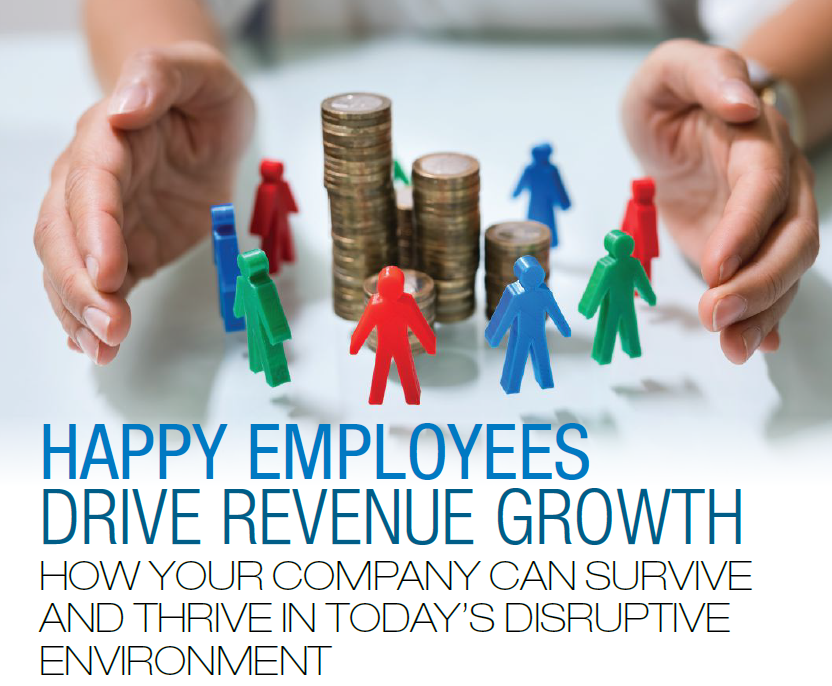 |
One of the many reasons we love working with distributors and manufacturers is because most of you care so much about your organizations, your teams and your customers. Consistent with that, we hear many of you express your commitment to building a world-class culture.
Doing so requires that you not only have great people on your teams who commit to your mission but also that you invest in them. The National Association of Manufacturers (NAM) Outlook Survey for the fourth quarter of 2022 revealed that more than three-fourths — 75.7% — of manufacturing leaders cited attracting and retaining “a quality workforce” as a primary business challenge.
Given the keen competition for workers, investing in your employees becomes especially important. But investing in them entails not just building their human capital — through on-the job training or broader education — but also supporting them in building and using their social capital — connections to other people in all walks of life.
Whereas 83% of the value of companies comprising the S&P 500 in 1975 came from their physical capital, by 2015 84% of the value came from human capital. Accordingly, the growing recognition of the importance of investing in your workforce — your company’s human capital — was reflected in a November 2020 ruling by the Securities and Exchange Commission (SEC).
That ruling, which constituted the first update to SEC human capital disclosures since 1977, underscores the critical role that human capital plays in companies’ performance. It mandates that companies not only disclose the number of employees but also describe their “human capital resources” and “any human capital measures or objectives that management focuses on in managing the business,” including any measures affecting “attraction, development and retention of personnel.”
As Harvard Business Review (HBR) reported in 2013, “companies with highly engaged people outperformed firms with the most disengaged folks by 54% on customer retention, by 89% in customer satisfaction and by fourfold in revenue growth.”
But the world in which you operate has changed dramatically since 2013 and this disruptive environment requires bold action and smart strategy. We now increasingly recognize that attracting, engaging, and retaining talent bears an inextricable link to attracting, engaging and retaining customers. Recent research from Louisiana State University (LSU) documented and specified the well-established relationship between employee engagement and customer engagement.
Although the study focused primarily on service employees, its findings mirror those from many other sectors. The researchers who conducted the study state, “Employees must go beyond simply being satisfied in their work roles; instead, employees must feel energized, find fulfillment and meaning and be engrossed in their work to maximize the service they provide to customers.” We also recommend implementing strategies to bolster customer satisfaction directly.
Here are some of our recommendations for you:
Understand the value of the RIGHT data. Relying on anecdotal information from your salespeople about your customers or on conversations with customers at trade shows cannot provide the data and understanding you need. You need solid, quantitative data on both your customers and your team. Many businesses THINK they have the data they need when in fact their data provide only about 25% of the story. Can you imagine having only 25% of the financial picture in your business? Having inadequate data on your team and your customers can prove just as disastrous.
Delight your customers. Research from McKinsey demonstrates the dramatic impact that delighting your customers can have on customer loyalty, referrals, repurchase, retention, revenue growth and opportunities for both cross-sells and upsells. In their words, “Delight occurs at the intersection of customer joy and surprise.”
They note that, although customer delight was restricted to elite brands in the past, technological advances and the shift toward customer-centric practices have made it easier for companies to implement strategies that can generate customer delight. Although delight and satisfaction are often correlated, they are separate and distinct.
Show your customers you are in a relational, rather than a transactional business. Your customers’ ability to order things online and pick them out while sitting in our cars has exploded in recent years but this ease has come at a cost: As much as your customers savor the convenience, they are looking for evidence that you are truly in a relational, rather than a transactional business. Doing so lays the foundation for bonding your customers, your distributors and your agents to you so tightly that no competitor can wrest them away — if you give them the relationship they’re seeking.
Answer the two most important questions in business. Building a relationship with your customers and demonstrating your commitment to them requires that you answer the two most important but ubiquitously unanswered questions in business: what do your customers want and how well are you giving them what they want? Understanding that holds the key to customer attraction, engagement and retention because the better you understand your customers, the more you gain the all-important insurance against market turmoil.
Understand who your team members are and what they need. In their survey regarding “the great attrition” in U.S. organizations, McKinsey and Company noted that combatting attrition requires executives to understand why employees are leaving — and far too many companies do not. Their data revealed that “more than half of employees who left their job in the past six months did not feel valued by their organization (54%) or manager (52%), or they lacked a sense of belonging (51%).”
? Invest in your teams. Although most distributors and manufacturers want to invest in your teams, many of you struggle to understand how to invest wisely in them. Doing so starts with understanding how they perceive their jobs. Too often, companies rely upon “fixed needs” models, such as Maslow’s hierarchy of needs, which implies that employees seek the same things from a job.
The reality, however, is that those models have been replaced by models showing that employee satisfaction exists to the extent that employees perceive the characteristics they value in a job are present in that job. You cannot cultivate a satisfied, engaged workforce with a “one-size-fits-all” approach.
Recognize the prevalence and effects of stress. A 2022 AFLAC survey revealed that employees are asking for mental health care at a higher rate than the preceding year. It also showed that mental health negatively affected the job performance of nearly half (46%) of workers; a majority (51%) of employers stated that employee mental health had affected their businesses in the last year. You can combat these effects by providing access to such things as online counseling to those affected by stress.
Understand the importance of social support. Research my colleagues and I conducted after Hurricane Katrina showed that, 18 months after the storm, levels of depressed mood — such things as having trouble sleeping, feeling sad and having trouble focusing on a task — remained twice pre-Katrina levels.
But those effects did not appear across the board: People who reported better social support reported lower rates of depressed mood. Nearly half — 49% — of those who said they had enough people to help them only “some of the time” reported a high level of depressed mood.That percentage fell to 23% among those who said they had enough people to help them “most” of the time and it dropped to 19% among those who reported they had enough people to help them “all the time.” Having better access to social support can help your team members combat the effects of work stress.
? Invest in your teams’ social capital by fostering coworker connections. One of the key ways in which your employees can garner social support is through connections with their coworkers. Whether they connect physically or virtually, fostering bonds among your coworkers can pay big dividends. Our published research shows that the more employees are connected with their coworkers, the higher their job satisfaction. Being connected to coworkers can also foster the feeling of belonging that McKinsey and Company cited as one of the top three factors affecting employees’ decisions to quit.
The competition to attract and retain talent shows no signs of abating — in fact, it will likely increase. Investing in your team and showing them that you do indeed view them in relational rather than transactional terms will not only increase their satisfaction and engagement but also support customer satisfaction and increase the probability that employees will recommend to others that they apply for a position in your organization. Making the commitment to understand your customers and deliver the kind of service they seek will pay similar dividends.
Jeanne Hurlbert, Ph.D., president of Hurlbert Consulting, is STAFDA’s Customer Service Consultant. She authored its Concierge Customer Service manual and writes the Association’s quarterly Customer Service Advisories. She served on the faculty of Louisiana State University for more than 20 years. Contact her at (888) 590-9677; www.HurlbertConsulting.com; email: jhurlbert@hurlbertconsulting.com.
This article originally appeared in the June/July 2025 issue of Contractor Supply magazine. Copyright, 2025 Direct Business Media.
















